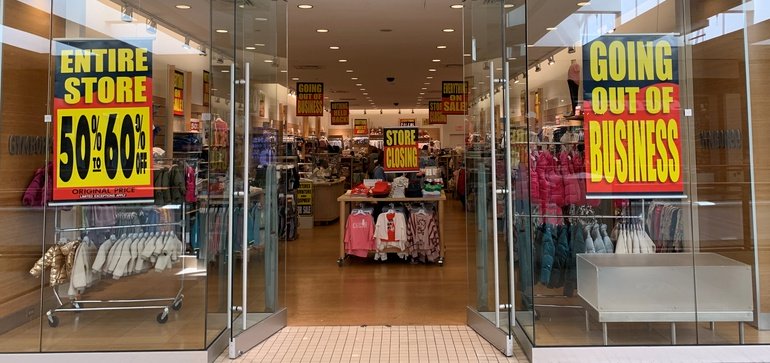Credit: Phillip Pessar, Flickr
AUTHOR|Ben Unglesbee
Source: www.retaildive.com, January 2020
Dive Brief:
- E-commerce has been a net negative — an agent of “destructive destruction” — for the retail industry writ large, according to a new study from credit insurance company Euler Hermes. The study found that 56,000 stores, or 10.7% of the discretionary retail footprint, have closed in the U.S. and 670,000 net jobs (9.6% of the total) have been lost since 2008.
- More, 41% of retailers have seen their profit margins decrease in that timeframe. Those various retail losses have tracked with the expansion of e-commerce, which has grown well ahead of other retail segments at 10.5% per annum. But for every job created in e-commerce, four and a half jobs are lost by traditional retailers, according to the study.
- And the bloodletting could continue, according to the study’s author, Aurélien Duthoit, sector advisor for retail, technology and household equipment with Euler Hermes. Duthoit estimates that continued e-commerce penetration could eliminate another 500,000 jobs and 30,000 retail establishments by 2025.
Dive Insight:
The Euler Hermes report paints a sobering picture of e-commerce’s impact on retail and throws some cold water on efforts among industry leaders to fight back against the “retail apocalypse” moniker for the rash of bankruptcies, wind downs, store closures and sales declines across many sectors of retail in recent years. The issues raised point to more than a mere correction of an overstored retail world.
Rather than replace brick-and-mortar with a similarly profitable, job-creating model, e-commerce by and large has wreaked destruction, permanently wiping jobs out of the economy and lowering profits for the entire industry, per the report. Department stores have been hit hardest, with nearly a quarter of the sector’s jobs lost since 2008, according to Euler Hermes. Hence the term “destructive destruction,” used by Duthoit, rather than the “creative destruction” that some economists see as essential to economic progress.
As for emerging e-commerce players, there have been “few successful new entrants,” and for all its sale growth, new players in the online sector have the lowest median profit margin of all retail segments, according to Euler Hermes. Among newly listed e-commerce companies, only three were cash flow positive in fiscal 2018.
Instead of a broadly profitable sector, e-commerce is “largely a ‘winner-take-most’ business where leaders have a commanding share of sales, and more importantly, of profits,” Duthoit writes. Duthoit cites Amazon and eBay as “the only two discretionary e-commerce companies with both a strong track record of profitability and significant clout.”
Meanwhile, for traditional retailers, efforts to boost e-commerce and omnichannel capabilities bring new expenses and risks, and won’t necessarily save a distressed retailer, according to the study.
Among the dozens of large retailers to file over the past three years, many described in bankruptcy filings an environment where shoppers quickly shifted their behavior, reducing mall visits and increasing their online shopping. Those companies, many of them with large debt loads from leveraged buyouts by private equity firms, couldn’t adapt in time to evade financial disaster.
Some of those companies were able to reorganize and return to the business of retailing a little leaner. Many others disappeared entirely. In a report released Thursday and emailed to Retail Dive, Fitch found that 50% of bankruptcies in 2019 ended up in liquidation. Among them were decades-old brands such as Payless (the largest liquidation ever by store count), Gymboree and Shopko.
Some forces could cause e-commerce’s rapid growth to “stall” according to the Euler Hermes report. Those forces include policy measures, such as antitrust action against dominant e-commerce firms (Amazon is currently facing multiple investigations into its practices) and carbon pricing.
That anything might slow the online sales train is “[p]ossible, but very unlikely,” Duthoit writes.
Follow Ben Unglesbee on Twitter

